









Hanoi, the capital of Vietnam, is one of the most ancient cities in the world. This place offers examples of both contemporary and classical architecture right in the city center.
A renowned destination for typical cuisine, home to fascinating attractions and hospitable people, and a diverse region with a combination of multi-communities. There is plenty to enjoy in Hanoi, from mouthwatering street food to fascinating history, from traditional entertainment to recreational activities.
Even with a short amount of time, you can still feel the tranquilness of the city while sipping a cup of coffee. Wandering around and shooting artistic photos on elegant streets in the Old Quarter would give you unique experiences that are hardly found anywhere else.
Outside the suburban areas, you can discover small charming villages which are homes to so many ethnic minorities.
Introduction to Hanoi's scenic spots not to be missed
When you hear about Hanoi's scenic spots, you will know many famous places associated with the name of the land of thousand years of civilization. According to the introduction of Hanoi by local people, this place has many unique attractions both inside and outside the city.
Tourist attractions in the city center
No need to travel far to visit the most famous tourist attractions in Hanoi, you just need to walk around the inner city to discover countless interesting destinations such as:
- Hanoi Old Quarter: Through the story and introduction of Hanoi, the Old Quarter is definitely a place that you must visit once. In addition to the old-style houses, the old town also has famous check-in points in Hanoi such as Ngoc Son Pagoda, Cathedral, Thang Long Puppet Theater...
- Hoan Kiem Lake: A symbol of the country's prosperity and rise through many introductions about Hanoi. The origin of the lake is related to a famous historical story: King Le Loi returned the sword to the god Kim Quy after fighting the Ming invaders.
- Temple of Literature is a most important historical and cultural relic of the capital and the whole country, built in 1076 under the reign of King Ly Nhan Tong. The Temple of Literature is the place to worship Confucius and the sages of Confucianism and is also the first university of Vietnam.
- Ho Chi Minh Mausoleum is also a place often mentioned when introducing Hanoi, this is the resting place of the beloved leader Ho Chi Minh. The mausoleum is the place to show the gratitude and respect of the Vietnamese people to President Ho.
- Imperial Citadel of Thang Long: As a national historical and cultural relic, recognized by UNESCO as a World Cultural Heritage in 2010. The citadel has a large area, including many important architectural works, such as: North Gate, South Gate, Dai La Thanh, Kinh Thien Palace, Long An Palace…
- West Lake: Is a famous place in the introduction of Hanoi tourism by local people. West Lake has a spacious and airy lakeside with many trees and flowers, suitable for those who want to enjoy the fresh air and relax.
Attractive tourist destinations in the suburbs
What is there to play and visit in the suburbs of Hanoi? If you have heard many recommendations about Hanoi but still do not know where to go, the following tourist attractions near Hanoi will be great suggestions for you:
- Bat Trang Pottery Village: Is a long-standing traditional craft village in Gia Lam district - Hanoi, famous for its diverse and sophisticated ceramic products. Here, visitors can admire the process of making pottery, experience making pottery at will, and shop for souvenirs.
- Duong Lam ancient village has been around for more than 1200 years through the introduction of Hanoi by the people here. The village was also recognized as a national cultural heritage in 2006. It still preserves many ancient historical, cultural and architectural relics, such as ironwood stilts, communal houses, temples, etc.
- Ba Vi National Park: A garden with an area of more than 10,000 hectares, including the three highest mountains, Peak King (1296m), Tan Vien Peak (1276m) and Ngoc Hoa Peak (1131m). Ba Vi National Park is quite biodiverse with many rare species of flora and fauna.








Ho Chi Minh City, formerly known as Saigon, is the largest and most populous city in Vietnam. This vibrant metropolis serves as the economic and cultural heart of the country, seamlessly blending its rich history with modern development. From bustling streets to historical landmarks, Ho Chi Minh City offers a dynamic and diverse experience for visitors.
- Economic Hub:
Ho Chi Minh City plays a pivotal role in driving Vietnam's economic growth. As the financial and commercial center, it boasts numerous shopping areas, night markets, and major commercial districts, including the famous Ben Thanh Market and Vincom Center.
- Modern Urban Landscape:
The city showcases a juxtaposition of classical and modern architecture. High-rise buildings, commercial centers, and entertainment areas like Nguyen Hue Walking Street contribute to the city's lively and contemporary atmosphere.
- Historical Landmarks:
Ho Chi Minh City is rich in historical significance with several landmarks:
- Independence Palace (Dinh Thống Nhất): Where President Ho Chi Minh declared Vietnam's independence.
- Notre-Dame Cathedral Basilica of Saigon: A iconic French colonial-era cathedral.
- War Remnants Museum: Documents the Vietnam War with powerful exhibits.
- Cultural Diversity:
The city is a melting pot of cultural influences. Various districts, such as District 5 (Chinatown), represent the diversity of communities within Ho Chi Minh City. This cultural amalgamation is also reflected in the culinary scene.
- Culinary Delights:
Ho Chi Minh City is a food lover's paradise, offering a wide array of delicious street food and traditional Vietnamese dishes. From the renowned pho to banh mi and diverse regional specialties, the city's culinary scene is a feast for the senses.
- Dynamic Nightlife:
The nightlife in Ho Chi Minh City is lively and diverse, with a plethora of bars, nightclubs, and rooftop lounges. Areas like Bui Vien Street in District 1 are popular among locals and tourists alike for late-night entertainment.
- Educational and Research Hub:
The city is home to many top universities and research institutions, attracting students and intellectuals. The academic scene contributes to the city's dynamic and forward-thinking atmosphere.
Ho Chi Minh City, with its combination of cultural richness, historical depth, and modernity, provides a unique and captivating experience for visitors. The city reflects Vietnam's resilience, development, and vibrant spirit, making it a must-visit destination in Southeast Asia.


Trang An Landscape Complex
Situated near the southern margin of the Red River Delta, the Trang An Landscape Complex is a spectacular landscape of limestone karst peaks permeated with valleys, many of them partly submerged and surrounded by steep, almost vertical cliffs. Exploration of caves at different altitudes has revealed archaeological traces of human activity over a continuous period of more than 30,000 years. They illustrate the occupation of these mountains by seasonal hunter-gatherers and how they adapted to major climatic and environmental changes, especially the repeated inundation of the landscape by the sea after the last ice age. The story of human occupation continues through the Neolithic and Bronze Ages to the historical era. Hoa Lu, the ancient capital of Viet Nam, was strategically established here in the 10th and 11th centuries AD. The property also contains temples, pagodas, paddy-fields and small villages.




Bai Tu Long Bay
Ha Long Bay, located in northeastern Vietnam, is a mesmerizing natural wonder that has captured the hearts of millions of travelers worldwide. Recognized as a UNESCO World Heritage Site, Ha Long Bay is renowned for its stunning emerald waters and thousands of limestone karsts and islets that rise dramatically from the sea. This extraordinary landscape is a testament to the power of nature's artistry and is often described as a "descending dragon" in Vietnamese folklore.
Natural Beauty:
Ha Long Bay is celebrated for its breathtaking scenery, where emerald waters reflect the towering limestone formations, creating a landscape that seems almost otherworldly. The bay spans over 1,500 square kilometers and is dotted with around 2,000 limestone karsts and islets, each with its unique shape and character. The combination of mist-covered peaks, hidden caves, and lush greenery contributes to the bay's ethereal charm.
UNESCO World Heritage Site:
In 1994, Ha Long Bay was designated as a UNESCO World Heritage Site in recognition of its outstanding natural beauty and unique geological features. The bay is not only a testament to Earth's history but also a critical habitat for diverse ecosystems, including coral reefs, mangrove forests, and a variety of marine species.
Iconic Attractions:
Among the numerous attractions within Ha Long Bay, some stand out:
- Ti Top Island: Known for its panoramic views from the summit and a beautiful sandy beach.
- Surprising Cave (Hang Sửng Sốt): A vast and stunning cave system with intricate stalactite formations.
- Floating Fishing Villages: Experience the unique lifestyle of local residents living on floating houses.
Cruises and Exploration:
One of the best ways to experience Ha Long Bay is through a cruise. Visitors can embark on a journey through the bay's emerald waters, explore hidden grottoes, and witness the magical beauty of the sunset over the karsts. Cruises often offer various activities, including kayaking, swimming, and visits to local fishing villages.
Cultural Significance:
Aside from its natural beauty, Ha Long Bay holds cultural significance with legends and myths deeply ingrained in Vietnamese folklore. The bay's name itself, which translates to "Descending Dragon Bay," is rooted in a legend about a dragon sent by the gods to protect the Vietnamese people.
Ha Long Bay stands as a testament to the power of nature's sculpting and continues to captivate the imagination of travelers from around the globe, making it a must-visit destination for those seeking both natural beauty and cultural richness.


Locally known as the “town of clouds”, Sapa is a charming treasure trove of Northwest Vietnam. At a glimpse of an eye, it effortlessly mesmerizes travelers by the beauty of iconic cascading terraced rice fields, lush valleys and emerald mountains lying side by side. Endowed by nature, it’s no wonder that Sapa has become one of the most alluring destinations in the country.
What makes Sapa even more special is the cultural richness of local ethnic minorities, boasting through the numerous customs and beliefs. Set amidst the idyllic rugged valleys are the tiny hill tribe villages, home to Hmong, Dzao, and Tay groups, who have been settling down here for hundreds of years while still being able to preserve their cultures and traditions. Enjoying local life with colorful ethnic costumes, typical dances, and songs performed by people of ethnic groups would be a memorable experience lingering in your mind during and long after your trip.
Hue, located in central Vietnam, is a city steeped in history, culture, and architectural splendor. As the former imperial capital of Vietnam, Hue served as the political, cultural, and religious center of the Nguyen Dynasty from 1802 to 1945. Today, it stands as a UNESCO World Heritage Site, preserving its rich heritage and captivating visitors with its imperial citadel, historic monuments, and unique cultural identity.
- Imperial City and Citadel:
The Imperial City of Hue, surrounded by a massive citadel, served as the seat of the Nguyen emperors. It is a vast complex with impressive gates, palaces, temples, and walls, showcasing Vietnamese traditional architecture. Inside the citadel, the Forbidden Purple City was the private residence of the emperor and his inner circle.
- Perfume River (Sông Hương):
The Perfume River flows through the heart of Hue, adding to the city's picturesque charm. Visitors can take a leisurely boat cruise along the river, enjoying the scenic landscapes and passing by iconic landmarks.
- Thien Mu Pagoda:
Thien Mu Pagoda, an iconic seven-story pagoda, is situated on a hill overlooking the Perfume River. Built in the 17th century, it is one of the oldest and most revered pagodas in Vietnam, with stunning views of the surrounding countryside.
- Tombs of the Nguyen Emperors:
The outskirts of Hue are dotted with elaborate tombs and mausoleums of the Nguyen emperors. The Tomb of Minh Mang, Tomb of Tu Duc, and Tomb of Khai Dinh are among the most renowned, each reflecting the personality and style of the emperor it honors.
- Hue Royal Court Music (Nhã Nhạc Cung Đình Hue):
Recognized as a UNESCO Intangible Cultural Heritage, Hue Royal Court Music is a traditional form of classical music that was performed at the imperial court. Visitors can enjoy performances showcasing the elegance and refinement of this unique art form.
- Dong Ba Market:
Dong Ba Market is a bustling marketplace where locals and visitors alike can experience the vibrant atmosphere of daily life in Hue. The market offers a wide array of local products, handicrafts, and delicious street food.
- Culinary Delights:
Hue is renowned for its distinctive cuisine, which reflects the imperial history of the region. Dishes such as bún bò Hue (spicy beef noodle soup), bánh khoái (Hue-style pancake), and nem lụi (grilled pork skewers) are local favorites.
- Hue Festival:
The biennial Hue Festival is a major cultural event that attracts artists, performers, and visitors from around the world. The festival showcases traditional arts, contemporary performances, and a variety of cultural activities, bringing Hue's heritage to life.
- Educational Institutions:
Hue is home to several reputable universities and educational institutions, contributing to the city's intellectual and cultural vibrancy.
Hue, with its imperial grandeur, historical significance, and cultural richness, offers a captivating journey into Vietnam's past and present. Whether exploring the ancient citadel or savoring local delicacies, visitors to Hue are immersed in a unique blend of tradition and modernity.
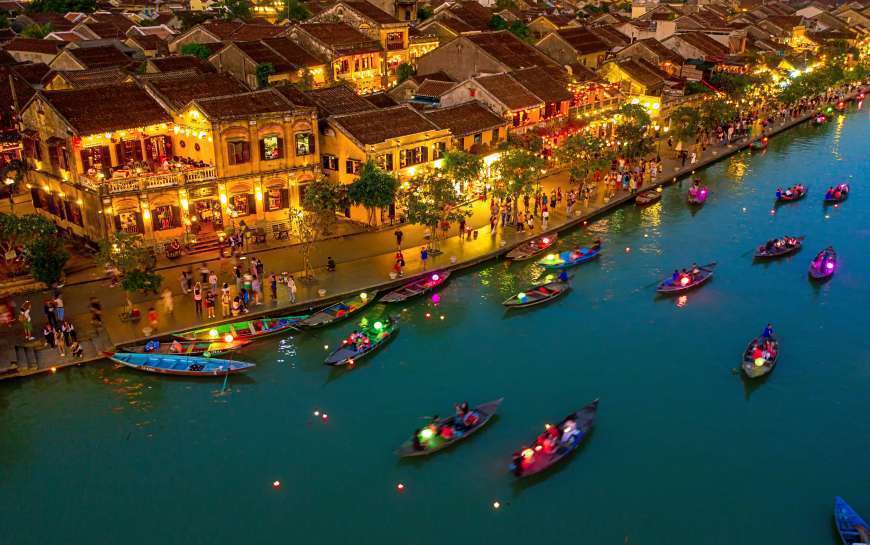
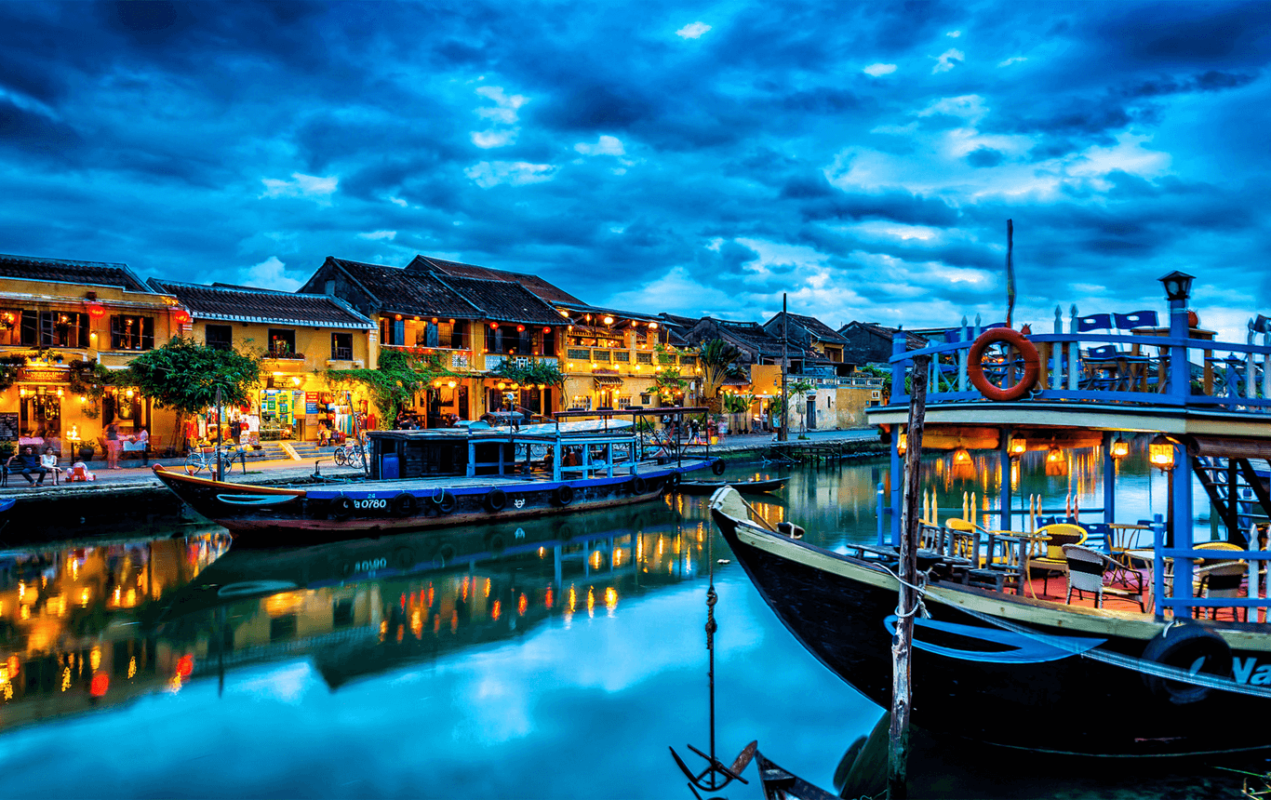
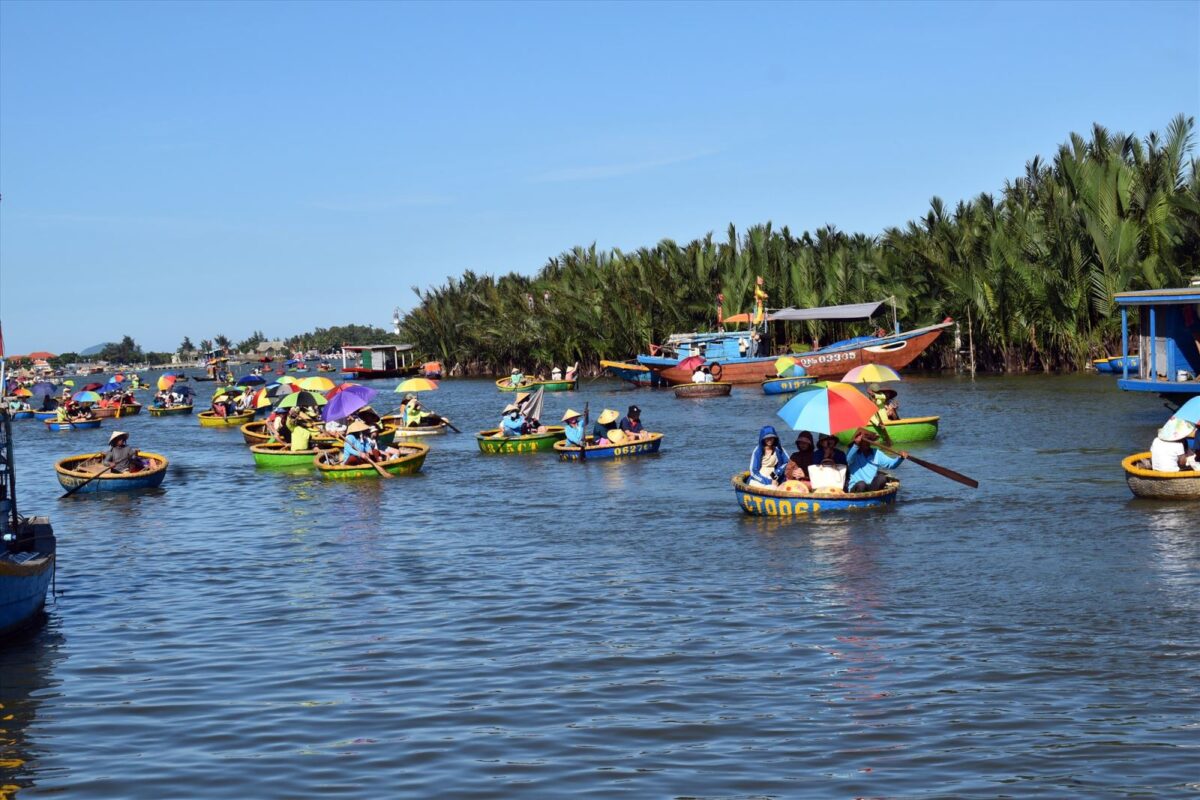
Hoi An, a charming town located on Vietnam's central coast, is a UNESCO World Heritage site known for its well-preserved Ancient Town. It was once a bustling trading port from the 15th to 19th centuries, drawing merchants from Japan, China, and Europe. Today, Hoi An is famous for its blend of historical architecture, vibrant lantern-lit streets, and rich cultural heritage.
The town’s iconic features include old merchant houses, wooden pagodas, and beautiful riverside settings. At night, the streets come alive with colorful lanterns, giving it a magical atmosphere. Hoi An is also renowned for its tailor shops, local cuisine, especially "cao lầu" and "bánh mì," and nearby attractions like An Bang Beach and the ancient temple complex of My Son.
Whether you're strolling along its narrow streets, enjoying a boat ride along the Thu Bon River, or exploring the nearby countryside, Hoi An offers a unique blend of history, culture, and natural beauty.


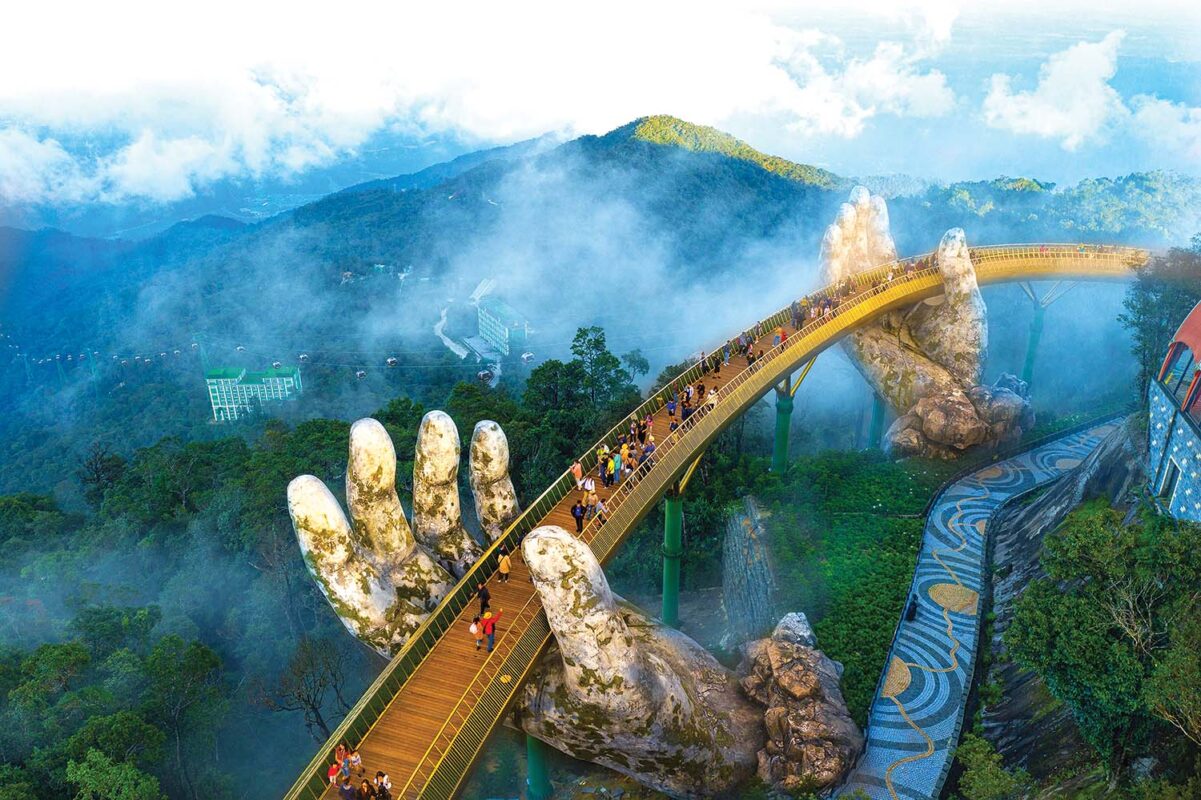


Introduction to Da Nang – The city has changed rapidly with a terrifying development speed, which is the comment of most people when they return to this beach city. Da Nang is located in the Central Part of Vietnam, so it is very convenient for people from the North or the South to move to. With a great location and a combination of sightseeing with Hoi An and Hue, Da Nang attracts millions of domestic and international tourists every year.
In this Da Nang introduction article, we will share all about this place to help people better understand the city that is like a miniature Singapore. People will understand better why people often call Da Nang the most livable city in Vietnam.
OVERVIEW OF DA NANG CITY
Da Nang has a total area of more than 1,000 kilometers square including 6 large districts: Hai Chau, Thanh Khe, Cam Le, Son Tra, Ngu Hanh Son and Lien Chieu districts. These are the 6 largest districts of Da Nang city and in the suburbs are 2 districts of Hoa Vang and Hoang Sa district. Currently, Da Nang has expanded 2 more districts, Hoa Xuan and Hoa Quy, thus increasing the total area in Da Nang greatly.
+ Hai Chau District: Nowadays, Hai Chau district is still the number 1 of Da Nang and the most economically developed place. Hai Chau district is the center of Da Nang city in terms of trade and business development.
+ Son Tra and Ngu Hanh Son districts: These are the two districts that attract tourists to Da Nang the most because of their location close to My Khe beach in Da Nang. It is home to more than 1,000 large and small hotels and is the largest tourist center in Da Nang.
+ Cam Le and Lien Chieu districts: Compared to the above 3 districts, these 2 districts are much less developed, mainly for people living and doing traditional business in Da Nang.
+ Hoa Vang district: This is a suburb far from the center of Da Nang city, mainly engaged in agriculture. About the city of Da Nang with a total of 6 districts, people also understand more about this place. Compared to Hanoi and Saigon, Da Nang has a much smaller area but is gradually developing on a par and is also a city directly under the Central Government.
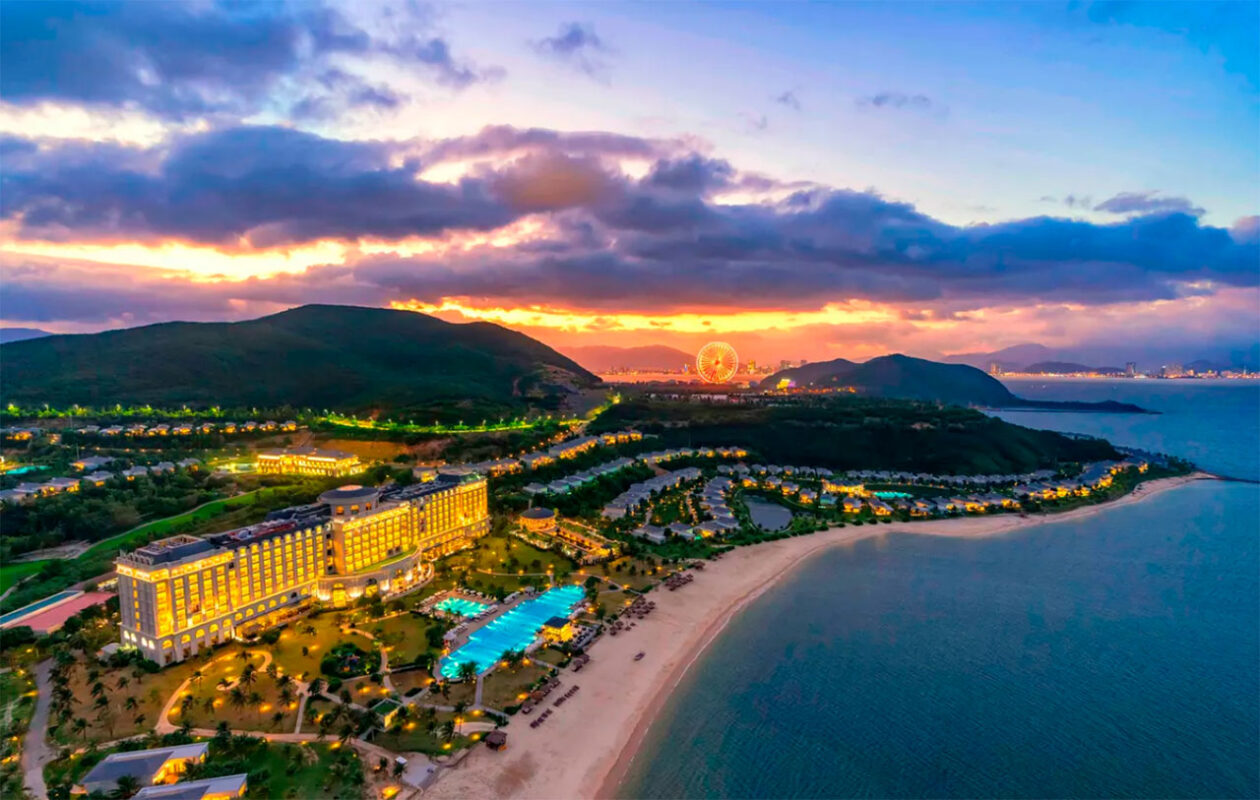
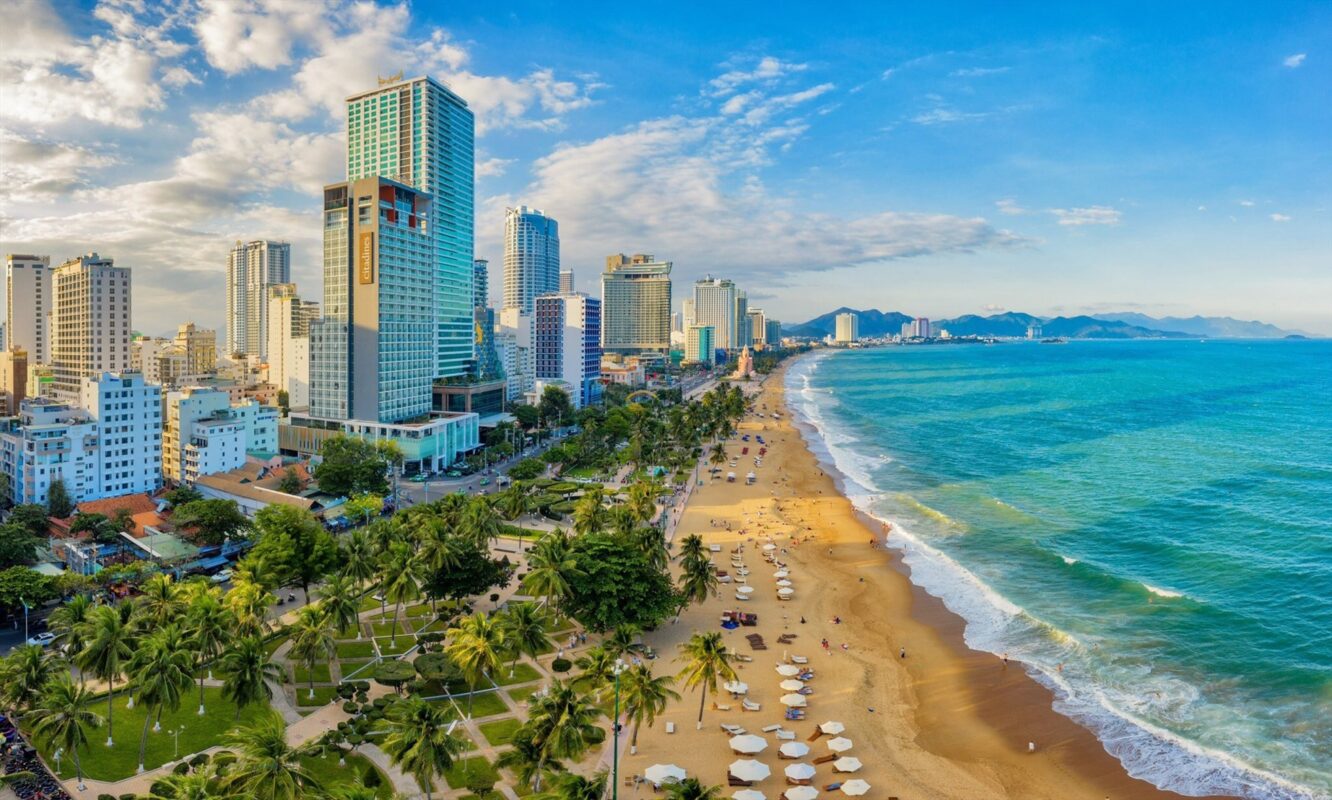

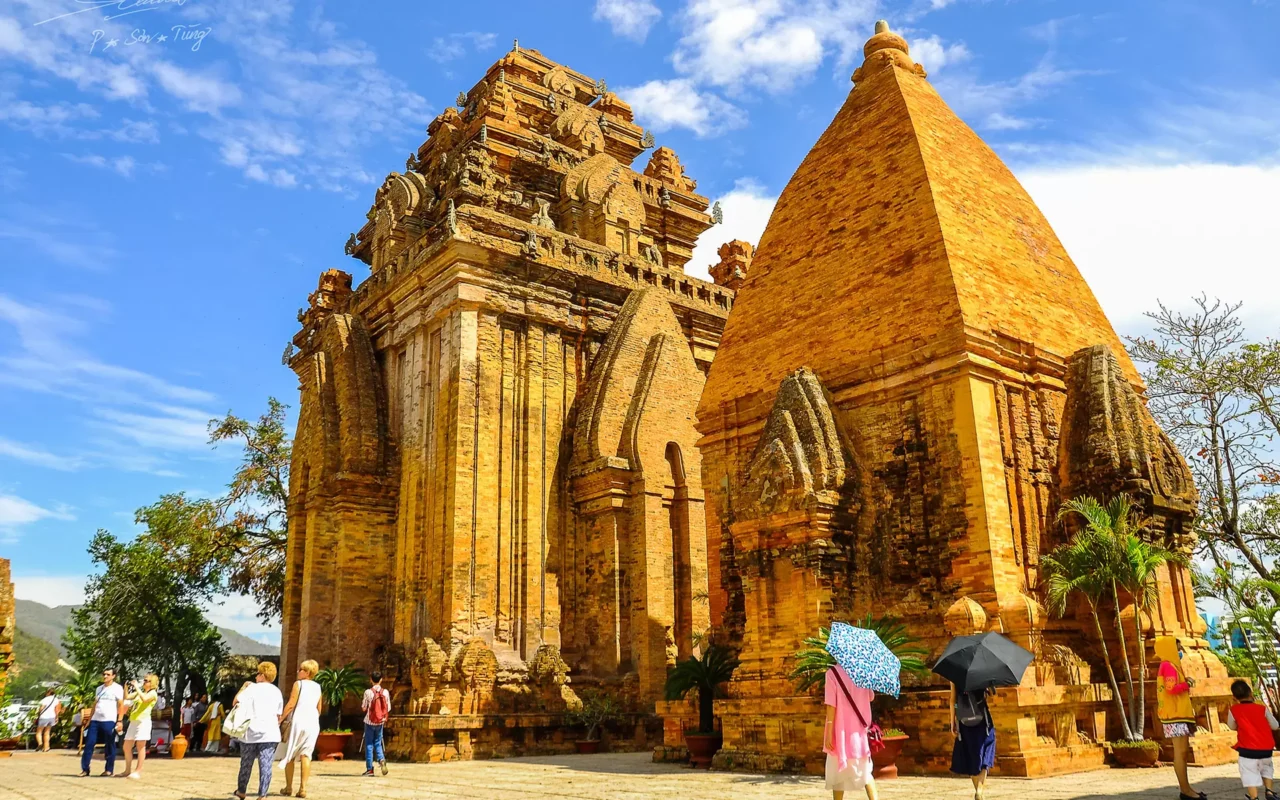







Da Lat, often referred to as the "City of Eternal Spring" or the "City of Flowers," is a charming and picturesque highland city nestled in the southern part of the Central Highlands of Vietnam. Known for its temperate climate, lush landscapes, and French colonial architecture, Da Lat has become a popular destination for those seeking a tranquil escape from the bustling city life.
- Mild Climate and Beautiful Scenery:
Da Lat enjoys a mild and temperate climate throughout the year, making it a refreshing escape from the heat of the lowlands. The city is surrounded by rolling hills, pine forests, and beautiful lakes, creating a serene and picturesque environment.
- French Colonial Architecture:
Founded during the French colonial period in the late 19th century, Da Lat retains many remnants of its colonial past. Visitors can explore charming French villas, historic railway stations, and the iconic Dalat Palace Hotel, reflecting the architectural influence of the French.
- Flower Gardens and Parks:
Known as the "City of Flowers," Da Lat is adorned with vibrant flower gardens and parks. The Valley of Love, Xuan Huong Lake, and the Flower Gardens are popular spots where visitors can enjoy the beauty of various flowers and landscapes.
- Xuan Huong Lake:
Situated at the heart of the city, Xuan Huong Lake is a tranquil and romantic setting. Visitors can take a leisurely stroll along the lake, enjoy a boat ride, or simply relax in the scenic surroundings.
- Pine Forests and Waterfalls:
The surrounding hills are covered with fragrant pine forests and dotted with mesmerizing waterfalls. Prenn Waterfall, Datanla Waterfall, and Elephant Waterfall are among the natural wonders that can be explored.
- Dalat Market and Local Cuisine:
Dalat Market is a bustling hub where visitors can experience the local culture, shop for fresh produce, and indulge in delicious street food. Da Lat is known for its unique culinary offerings, including strawberry-related products, avocado ice cream, and artichoke tea.
- Adventure Activities:
For those seeking adventure, Da Lat offers a range of activities. Visitors can embark on trekking and hiking tours to explore the scenic landscapes, visit the Langbiang Mountain, or enjoy thrilling rides at the Dalat Adventure Park.
- Cultural and Artistic Scene:
The city has a vibrant cultural scene with various art galleries, exhibitions, and cultural events. The Lam Dong Museum and the Crazy House, an unconventional architectural marvel, are notable attractions that showcase the artistic side of Da Lat.
Da Lat's unique combination of natural beauty, cool climate, and cultural charm makes it a captivating destination for travelers seeking a tranquil retreat in the heart of Vietnam.








Can Tho is a vibrant and dynamic city located in the heart of the Mekong Delta, the southernmost region of Vietnam. As the largest city in the Mekong Delta, Can Thois not only a significant economic hub but also a destination rich in cultural heritage, floating markets, and natural beauty.
- Can Tho Bridge:
The city is home to the iconic Can ThoBridge, a cable-stayed bridge spanning the Hậu River. Illuminated at night, the bridge is not only a vital transportation link but also a symbol of Cần Thơ's development.
- Cai Rang Floating Market:
Cai Rang Floating Market is one of the largest and most famous floating markets in the Mekong Delta. Boats here are laden with a variety of fruits, vegetables, and local products, creating a vibrant and lively atmosphere on the water.
- Ong Pagoda (Quang Trieu):
Ong Pagoda, also known as Quang Trieu, is a Chinese-style temple in Cần Thơ. The temple dates back to the 19th century and is known for its intricate architecture, beautiful courtyards, and cultural significance.
- Ninh Kieu Wharf:
Ninh Kieu Wharf is a bustling area along the Hậu River, lined with restaurants, cafes, and souvenir shops. It's a popular spot for both locals and tourists to enjoy the riverside atmosphere and take boat trips to explore the nearby floating markets.
- Can ThoMuseum:
For those interested in the history and culture of the Mekong Delta, the Can ThoMuseum is a valuable stop. The museum showcases artifacts, exhibits, and information about the region's development, traditions, and lifestyle.
- Ong Pagoda Bridge (Cau Ong Pagoda):
This picturesque bridge connects the city to Ong Pagoda. It's a great spot to enjoy panoramic views of the Hậu River and the city skyline.
- Binh Thuy Ancient House:
Binh Thuy Ancient House is a well-preserved example of French colonial architecture. The house, surrounded by lush gardens, offers a glimpse into the lifestyle of a wealthy Vietnamese family during the early 20th century.
- Rural Landscapes and Eco-Tourism:
Can Tho is surrounded by beautiful rural landscapes, orchards, and traditional villages. Eco-tourism activities, including boat tours through narrow canals and cycling through lush countryside, provide visitors with an authentic experience of Mekong Delta life.
- Delicious Mekong Delta Cuisine:
Can Tho is a paradise for food lovers, offering a variety of Mekong Delta specialties. From savory noodle soups like bún riêu cua to fresh seafood, the local cuisine reflects the diverse agricultural products and culinary traditions of the region.
Can Tho, with its unique blend of urban development, cultural richness, and natural beauty, offers a memorable experience for those exploring the enchanting Mekong Delta in Vietnam.
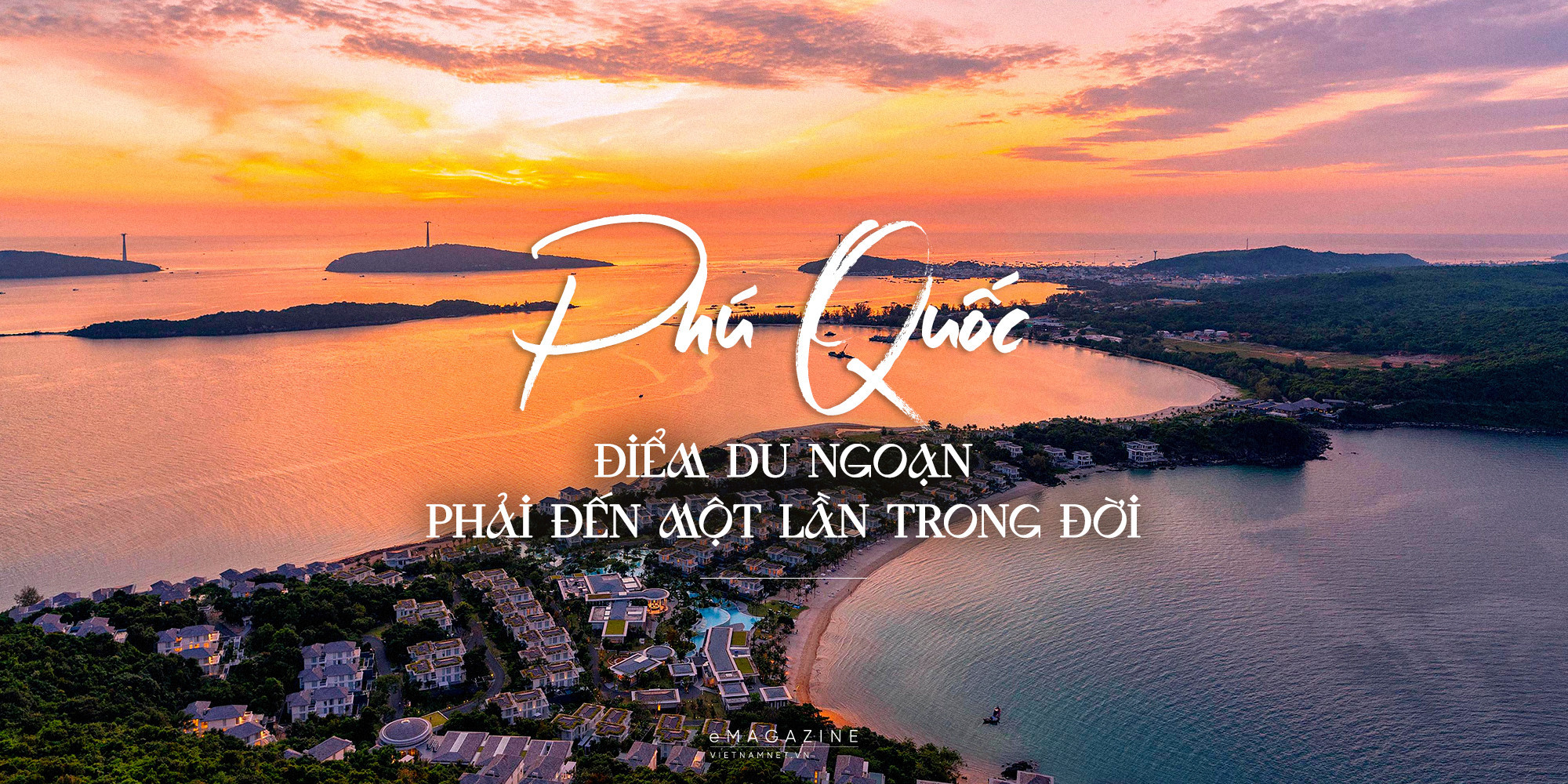





Phu Quoc is a tropical paradise located in the Gulf of Thailand, off the coast of Cambodia and administered by Vietnam. Known for its pristine beaches, crystal-clear waters, and lush landscapes, Phu Quochas gained popularity as a premier island destination in Southeast Asia.
- Stunning Beaches:
Phu Quoc is home to some of the most beautiful beaches in Vietnam. Long Beach (Bãi Trường) is the most famous, offering white sandy shores and turquoise waters. Other notable beaches include Sao Beach and Ong Lang Beach, each with its unique charm.
- Marine Life and Coral Reefs:
The waters surrounding Phu Quocare rich in marine life and coral reefs. Snorkeling and scuba diving enthusiasts can explore the vibrant underwater world, witnessing colorful coral formations and diverse aquatic species.
- Phu Quoc National Park:
Inland, Phu Quoc National Park covers a significant portion of the island and is known for its diverse ecosystems. Visitors can explore dense forests, hiking trails, and encounter unique wildlife, including exotic bird species.
- Fish Sauce Industry:
Phu Quoc is renowned for its fish sauce, a key ingredient in Vietnamese cuisine. The island has numerous fish sauce factories, and visitors can take guided tours to learn about the traditional fish sauce-making process.
- Night Markets and Local Cuisine:
Dinh Cau Night Market in Duong Dong Town is a bustling hub where visitors can experience local culture and indulge in fresh seafood, traditional dishes, and street food. Phú Quốc's cuisine is known for its seafood delicacies and unique flavors.
- Pearl Farms:
Phu Quocis famous for its pearl industry. Visitors can tour pearl farms to witness the cultivation process and purchase exquisite pearl jewelry and souvenirs.
- Sunset Watching at Dinh Cau Rock:
Dinh Cau Rock, located at the mouth of the Duong Dong River, is a popular spot for watching the sunset. The area also features a lighthouse and a small shrine, adding cultural and scenic appeal.
- Vinpearl Safari and Vinpearl Safari:
Vinpearl Safari is an expansive wildlife conservation park where visitors can see a variety of animals, including elephants, giraffes, and white lions. Vinpearl Safari is part of the Vinpearl Safari & Conservation Park complex, offering entertainment and education for families.
- Relaxing Resorts and Spas:
Phu Quoc boasts a range of luxurious resorts and spas, providing a perfect setting for relaxation. Many resorts are nestled along the coastline, offering stunning ocean views and top-notch amenities.
Phu Quoc, with its natural beauty, cultural richness, and diverse activities, has become a sought-after destination for those seeking a tropical getaway in Vietnam. Whether you're interested in beach relaxation, outdoor adventures, or cultural experiences, Phu Quochas something to offer for every traveler.














